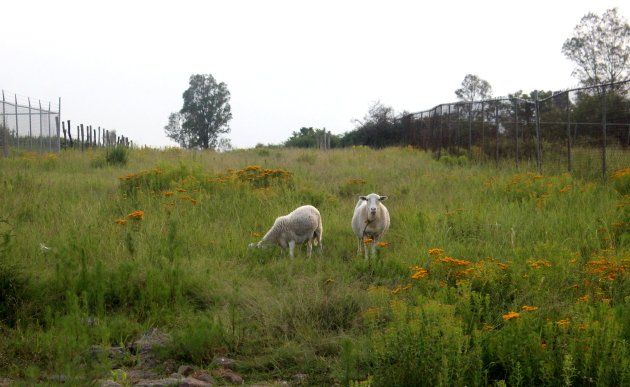
I love living in central Mexico, and miss very few things about living in the U.S. Of course, I also love birding in Mexico, with its 1,000+ species, and seemingly infinite variety of habitats.
But, just occasionally, I feel a twinge of jealousy towards my northern companions. I generally wait until we make one of our rare visits to the States to buy my optics, as both price and variety are much better there. I would love to walk through a marsh on a wooden bridge, and stop in an observation hut, as you can do up north. But most of all, I wish I had a native plant nursery nearby.
Mexico, like many developing countries, has a terrible problem with habitat destruction. Just this Monday, I saw a small area of recently destroyed forest… in the middle of a heavily-used portion of a national park! I have repeatedly tried informing the corresponding authorities, but have not seen any results so far. So I console myself by trying my best to create new habitat, to replace a bit of what is lost. It may be a drop in the ocean, but it makes me — and the birds that visit — feel a whole lot better.
When we purchased our house lot, it was a weedy lot that was sometimes used by the neighbors for burning and burying garbage. Now, lots in Mexican cities are small; but today, our yard is a little piece of forest, with the equivalent of 11 full-grown trees, and lots of understory. At first, I planted typical garden plants. But over the past several years, I have found ways to introduce as many native plants as possible.
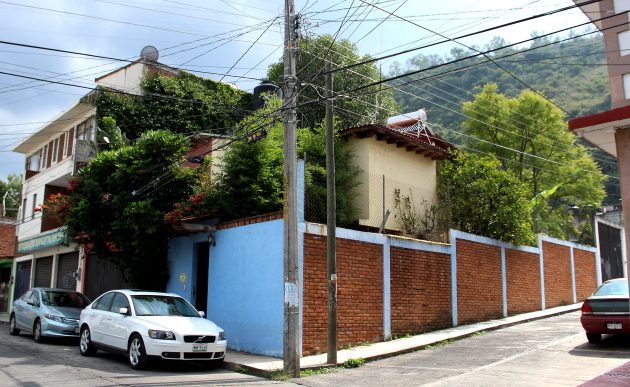 25 years ago, this was all trash and knee-high weeds.
25 years ago, this was all trash and knee-high weeds.
As I said, I do not have access to a native plant nursery. So how do I get my natives? First, let me make clear: I never dig up wild plants! My first experience was an easy one: I found a Prickly Pear cactus growing on the roof, and I left it there. It now bears lots of fruit for Blue Mockingbirds and Curve-billed Thrashers. I moved most of the ferns that sprouted between our roof tiles down to my retaining wall, so I can enjoy them up close. And, most of all, I learned to take cuttings from the wild flowers visited by the hummingbirds I see as I bird.
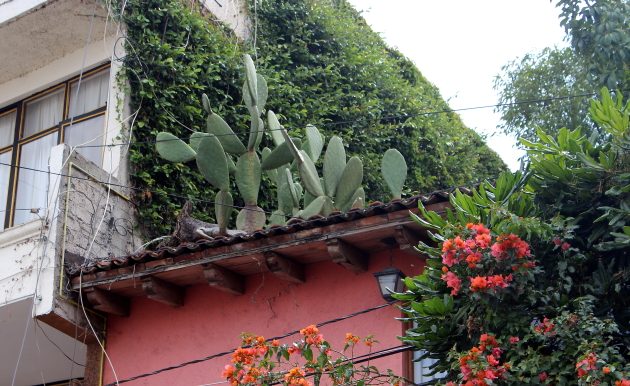 Go ahead, admit it. You’re jealous of my roof cactus.
Go ahead, admit it. You’re jealous of my roof cactus.
You can find many guides to reproducing plants by cuttings online. But I found that starting them indoors, in sterilized pots and soil, with rooting hormone and a plastic bag “greenhouse”, rarely worked for me. Now, I wait for the first weeks of our rainy season (when our natives are wired to grow no matter what!), bury at least two leaf nodes of my cuttings in unsterilized homemade compost, and place them in light shade until they stop wilting at midday. Within a couple of weeks, most show signs of having rooted. This method has allowed me to grow a good number of our many local Salvias in my garden, as well as a couple of species of Penstemons, and one Hummingbird Mint (Agastache). The Salvias from nearest our home have since become fully naturalized, reproducing freely in our yard. Our Broad-billed and Berylline Hummingbirds thank me.
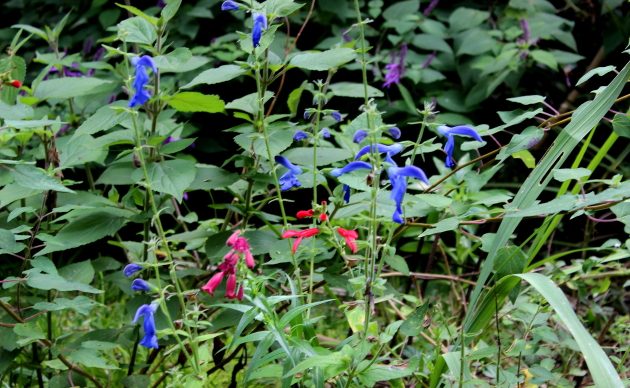
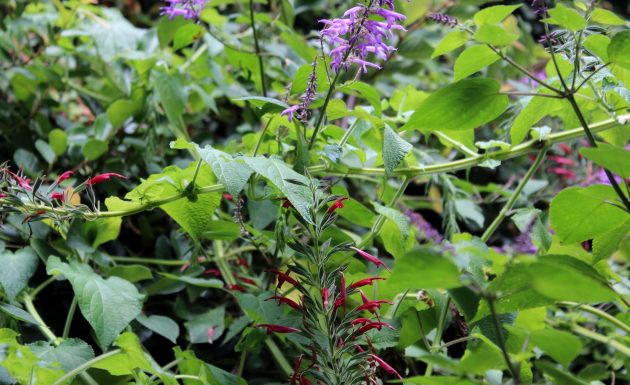 Four native Salvias from my garden, as well as a native Penstemon.
Four native Salvias from my garden, as well as a native Penstemon.
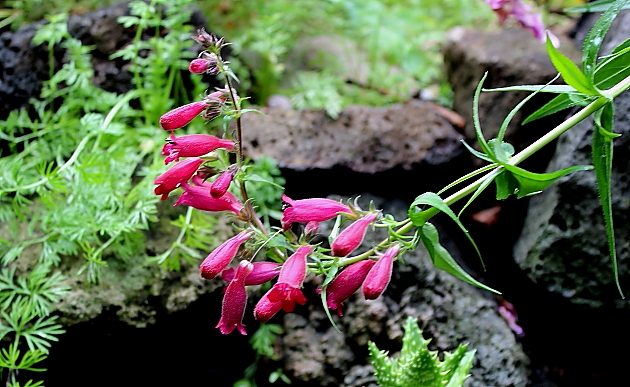 That’s the Penstemon up close.
That’s the Penstemon up close.
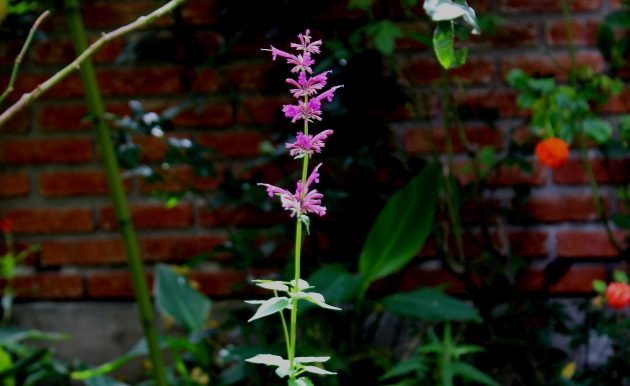 This is the Agastache. For Hummingbirds, these are all very yummy flowers!
This is the Agastache. For Hummingbirds, these are all very yummy flowers!
But now, I have a much bigger project. Our church has one acre of undeveloped property, and since I am the pastor, I get to play with it! The surrounding area (about which I wrote in my last article) is still relatively wild; You can see what the area is like in the header photo. But this are is sure to get developed soon. So I am trying to create an island of improved habitat, in preparation for that day. On the front side, along our access road, I am planting flowering and fruiting plants that most people are more used to. But on the back side, it’s all native plants — as many species as possible.
But where did I find them?
Unfortunately, government reforestation projects (which, I’m delighted to say, have become very abundant, although not that effective yet) mostly focus on one kind of trees: Pines. I’m fine with pines, and some 30 of these reforestation pines are now established on our lot. But they are not the birdiest trees, and I want only about half of our trees to be conifers.
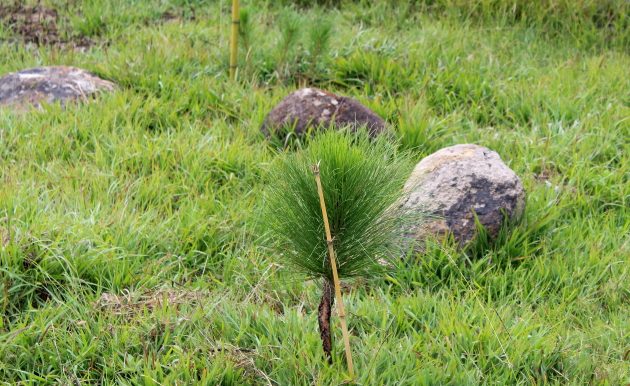 Michoacán Pine, 2 years old, 2 feet tall.
Michoacán Pine, 2 years old, 2 feet tall.
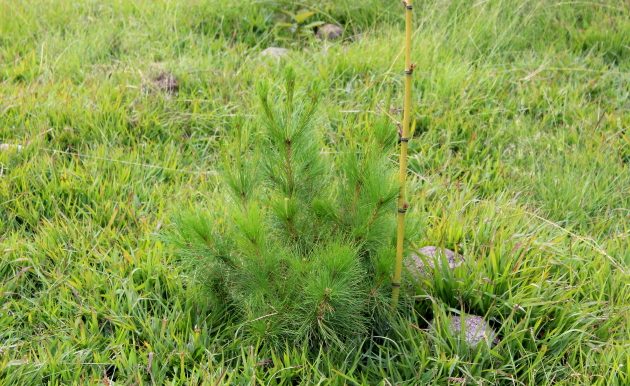 Smooth-leafed Pine, same age, same height, more width.
Smooth-leafed Pine, same age, same height, more width.
The church lot, unfortunately, is in an area that experiences yearly brush fires. We are hoping to prevent next year’s fire by keeping the lot’s grass and forbs as short as possible. But I should note that both of the above trees have survived two brush fires already. Our local plants are surprisingly fire resistant!
The following tree is a purchased Mexican Bald Cypress, a beautiful native I very much want to see on our lot. I thought it was dying at the end of its first dry season. Then it went through its first brushfire, just before the summer rains kicked in. (You can see its pre-fire trunk above it.) And look at all that healthy growth now, six months later!
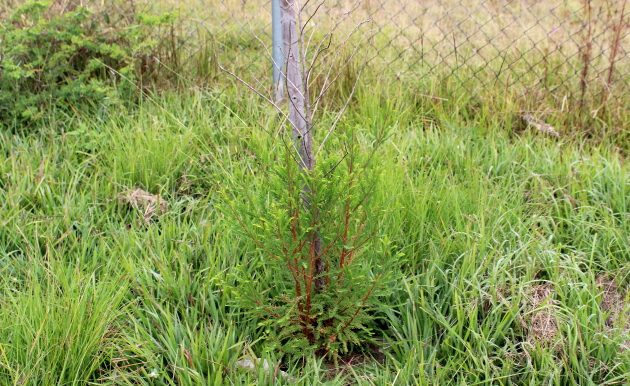
But to get the really good bird trees in Mexico, you have to get creative! Few trees are as birdy as Oaks. But nobody sells Oaks here, and the reforestation programs ignore them, in spite of the fact that our predominant habitat in this region is called Pine-Oak Forest. So I had to learn to gather and plant acorns. We already have seven growing in the church lot, and I have some twenty-five putting down roots in pots at home. They haven’t sprouted yet, but are clearly on their way.
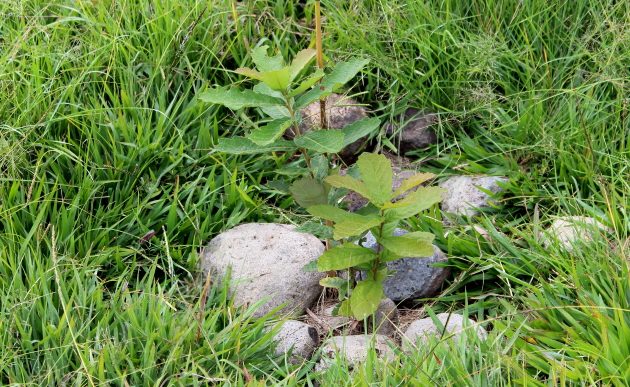 20 months and one fire later, this acorn is now a foot-tall Oak.
20 months and one fire later, this acorn is now a foot-tall Oak.
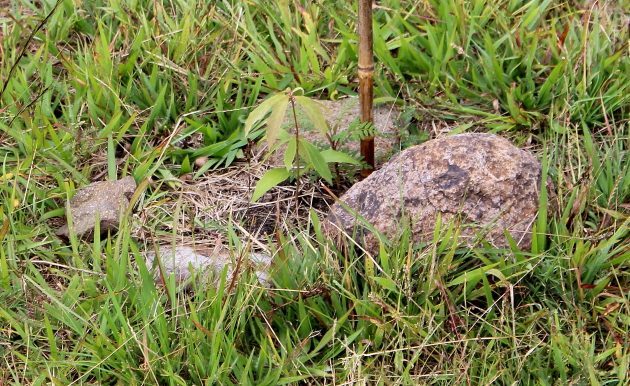 And this Pin Oak was an acorn only four months ago!
And this Pin Oak was an acorn only four months ago!
Planting from seed works for other species, as well. This Wild Cherry (Prunus serotina), three feet tall, somehow turned up all on its own on our lot. But it inspired me to intentionally, and successfully, establish several other Wild Cherries from seed on other parts of our lot. Wild Cherries are delicious!
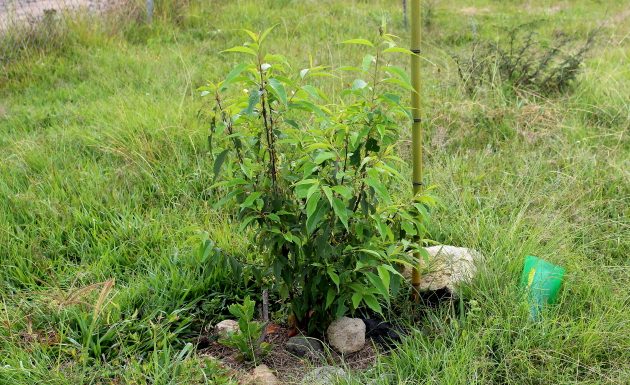
Along with these species, I have also planted four other native species, and am attempting to provide optimal conditions for the Huizaches, Granjenos and Prickly-Pears already growing on the lot. (These species were also featured in my last post.)
I can’t imagine being a birder without caring for the environment. We should protect it wherever we can. And, whenever we have access to a bit of land, or even a piece of roof, why not create some habitat of our own?











This is great! Is there any possibility that the range of some of the native plants from the southwestern US make it as far south as you? There may be native plant seed companies in the US that could provide a species or two.
Anyone interested in this sort of project might want to read Bringing Nature Home by Douglas W. Tallamy.
Yes, I am (jealous of your roof cactus)
En este tiempo de destrucción accelerada del medio ambiente y de nuestro afán a cometer un suicidio colectivo, es maravilloso leer artículos como los suyos. Gracias .
¡Qué gusto recibir un comentario en español! Ya sabes, Pierre, es un granito de arena nada más. Justo hoy me encontraba soñando con adueñarme de más hectáreas, con tal de hacer algo más sustancioso. Por mientras, seguimos abogando por nuestros amiguitos plumados.